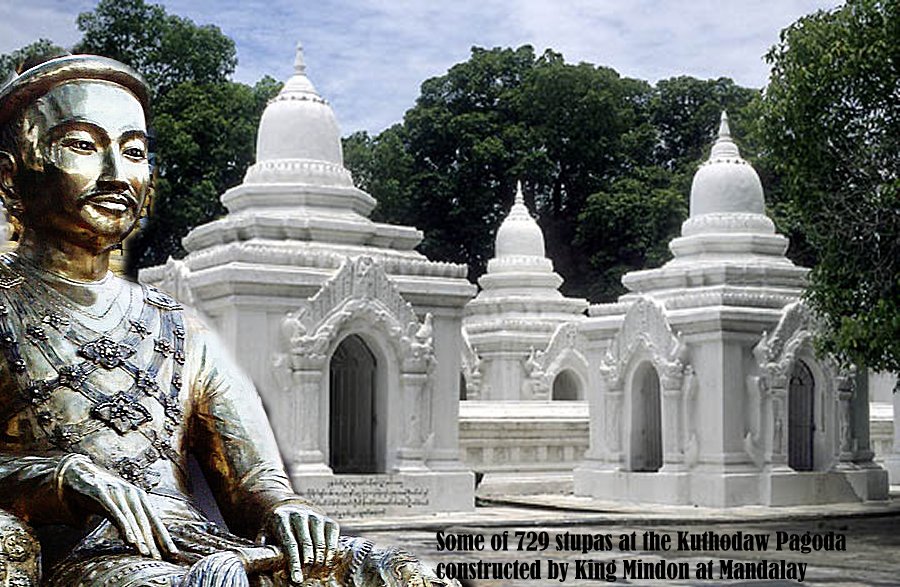Kuthodaw Pagoda – ‘The World’s Largest Book’ Carved In 729 Marble Slabs
A. Sutherland - AncientPages.com - Kuthodaw Pagoda is an amazing complex known as the ‘World's Largest Book’ and is located in Mandalay, Burma (Myanmar).
It was constructed during the reign of King Mindon (1808 – 1878), one of the most popular and revered kings of Burma. At the same time, the nearby Royal Palace was also built.
It comprises a gilded stupa, 188 feet (57 m) high: its four corners are decorated with four large golden Chinthe, mythological lions, that guard the pagoda. The structure is surrounded by hundreds of sacred stone shrines housing 729 marble slabs inscribed with Buddhist teachings.
These slabs are inscribed on both sides with a page of text from the Tipitaka – the Buddhist scriptures composed during the period from c. 500 BC to about the start of the Common Era.
This marvelous pagoda was built during the reign of King Mindon as part of the foundations of the then royal city of Mandalay in 1857.
The carving the Tipitaka text in hundreds of stone tablets took eight years, from 1860 to 1868. The 730th carved tablet was placed at the southeast corner and records the history of these 729 tablets. Neatly arranged in rows and housed by little white Buddhist stupas later built, these 729 marble tablets with the text of Tipitaka are considered “the biggest book in the world”.
See also:
Legend Of Ancient Princess Thone Pan Hla Who Is Believed To Haunt Pyay In Myanmar
Mireuksa Pagoda: Largest And One Of The Oldest Of Korean Pagodas
Ruins Of The Mysterious Kingdom Of Guge That Suddenly Vanished Overnight
Each marble slab measuring 153 centimeters tall and 107 centimeters wide is enshrined in a cave. The texts were copied from ancient manuscripts written on dried palm leaf, the letters chiseled out of the stone and inlaid with gold leaf.
It is said that one will need 450 days to finish reading all these tablet inscriptions if he reads eight hours a day. The masterwork was created for future generations of modern scholars in Buddhism and pilgrims.
Kuthodaw Pagoda's carved slabs. Each marble slab measuring 153 centimeters tall and 107 centimeters wide is enshrined in a cave. The texts were copied from ancient manuscripts written on dried palm leaf, the letters chiseled out of the stone and inlaid with gold leaf.
The main entrance to the pagoda – a gold and red South gate - is decorated with sculptures depicting deities and animals from Hindu and Buddhist mythology. Mural paintings dated to the 19th century) adorn its walls. At the end of the corridor is a pavilion enshrining an image of the Buddha. The compound of Kuthodaw Pagoda is surrounded in three square city walls, which were equipped with grand teak doors richly decorated with statues of lions and crocodiles.
On top of a pole in front of the pagoda is Garuda, a bird from Buddhist and Hindu mythology) grasping a Naga serpent.
The marble carved slabs were once very beautiful.
When the tablets were revealed in 1868, each line of writing had been filled with golden ink and the stones were decorated with precious stones including rubies and diamonds.
Unfortunately after the British invaded in the mid-1880s, the troops looted the temple site, stripping the slabs of their gold ink and gems.
Written by – A. Sutherland AncientPages.com Staff Writer
Copyright © AncientPages.com All rights reserved. This material may not be published, broadcast, rewritten or redistributed in whole or part without the express written permission of AncientPages.com
Expand for referencesJ. Powers, The Buddhist World
More From Ancient Pages
-
 1,500-Year-Old Tunnel Tomb With Human Remains And Artifacts Accidentally Unearthed In Japan
Archaeology | Feb 23, 2018
1,500-Year-Old Tunnel Tomb With Human Remains And Artifacts Accidentally Unearthed In Japan
Archaeology | Feb 23, 2018 -
 Sacred Artifact With Mystical Powers – The Legend – Part 1
Ancient Mysteries | Apr 24, 2019
Sacred Artifact With Mystical Powers – The Legend – Part 1
Ancient Mysteries | Apr 24, 2019 -
 Mysterious Yamacutah – A Sacred Native American Indian Shrine
Artifacts | Sep 18, 2020
Mysterious Yamacutah – A Sacred Native American Indian Shrine
Artifacts | Sep 18, 2020 -
 Anansi The Spider: Trickster And Spirit Of Knowledge In African Mythology
African Mythology | Jul 20, 2016
Anansi The Spider: Trickster And Spirit Of Knowledge In African Mythology
African Mythology | Jul 20, 2016 -
 Dragons And Dragon Kings In Ancient Mythology
Featured Stories | Mar 8, 2023
Dragons And Dragon Kings In Ancient Mythology
Featured Stories | Mar 8, 2023 -
 Skadi: Goddess Of Destruction, Giantess And Patron Of Winter Hunters And Skiers In Norse Mythology
Featured Stories | Dec 14, 2017
Skadi: Goddess Of Destruction, Giantess And Patron Of Winter Hunters And Skiers In Norse Mythology
Featured Stories | Dec 14, 2017 -
 Ancient Egyptian Cosmetics – Why Was It So Important To Both Men And Women?
Ancient History Facts | May 19, 2020
Ancient Egyptian Cosmetics – Why Was It So Important To Both Men And Women?
Ancient History Facts | May 19, 2020 -
 Igaluk – Powerful Eskimo Moon God That Directs Natural Phenomena
Featured Stories | Feb 13, 2019
Igaluk – Powerful Eskimo Moon God That Directs Natural Phenomena
Featured Stories | Feb 13, 2019 -
 Nalanda – One Of The Most Praised Learning Centers And Masterpiece Of Ancient World
Featured Stories | Aug 24, 2015
Nalanda – One Of The Most Praised Learning Centers And Masterpiece Of Ancient World
Featured Stories | Aug 24, 2015 -
 Remains Of Aztec Palace That Belonged To Axayacatl, Father Of Montezuma Unearthed In Mexico City
Archaeology | Jul 18, 2020
Remains Of Aztec Palace That Belonged To Axayacatl, Father Of Montezuma Unearthed In Mexico City
Archaeology | Jul 18, 2020 -
 America’s Mysterious Waffle Rock Formation
Featured Stories | Apr 15, 2014
America’s Mysterious Waffle Rock Formation
Featured Stories | Apr 15, 2014 -
 Many Roman Citizens Joined The Huns And Preferred Their Nomadic Lifestyle – New Study
Archaeology | Apr 4, 2017
Many Roman Citizens Joined The Huns And Preferred Their Nomadic Lifestyle – New Study
Archaeology | Apr 4, 2017 -
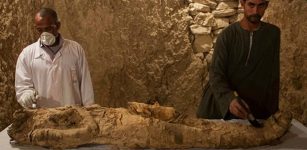 Mummy Of Unidentified Official Discovered In 3,500-Year-Old Tomb In Luxor, Egypt
Archaeology | Dec 11, 2017
Mummy Of Unidentified Official Discovered In 3,500-Year-Old Tomb In Luxor, Egypt
Archaeology | Dec 11, 2017 -
 Ranikot Fort: Gigantic Great Wall Of Pakistan Shows Greatness Of Indus Valley Civilization
Featured Stories | Mar 27, 2019
Ranikot Fort: Gigantic Great Wall Of Pakistan Shows Greatness Of Indus Valley Civilization
Featured Stories | Mar 27, 2019 -
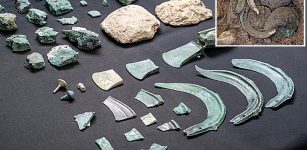 Unique 80 Bronze Age Artifacts Dated To Roman Campaign In The Alps In 15 BC – Discovered
Archaeology | Jul 3, 2023
Unique 80 Bronze Age Artifacts Dated To Roman Campaign In The Alps In 15 BC – Discovered
Archaeology | Jul 3, 2023 -
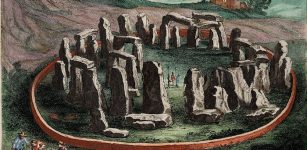 Hunter-Gatherers Used Open Habitats Millennia Before Stonehenge Monuments Were Built
Archaeology | Apr 27, 2022
Hunter-Gatherers Used Open Habitats Millennia Before Stonehenge Monuments Were Built
Archaeology | Apr 27, 2022 -
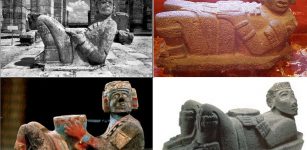 Image Of The Day: Chacmool – Famous Ancient Statue Of Pre-Columbian Mesoamerica
Image Of The Day | Sep 10, 2015
Image Of The Day: Chacmool – Famous Ancient Statue Of Pre-Columbian Mesoamerica
Image Of The Day | Sep 10, 2015 -
 Ancient Greek Inscription Could Reveal Biblical Saint Peter’s Birthplace – Archaeologists Say
Archaeology | Aug 29, 2022
Ancient Greek Inscription Could Reveal Biblical Saint Peter’s Birthplace – Archaeologists Say
Archaeology | Aug 29, 2022 -
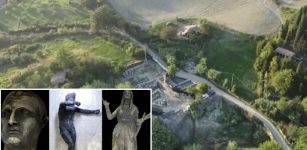 Incredible 2,300-Year-Old Roman-Etruscan Time Capsule Opened In San Casciano dei Bagni, Italy
Featured Stories | Dec 20, 2023
Incredible 2,300-Year-Old Roman-Etruscan Time Capsule Opened In San Casciano dei Bagni, Italy
Featured Stories | Dec 20, 2023 -
 Facial Reconstruction Of Ancient Inhabitants Of Sagalassos Make Them Almost Real
Archaeology | May 31, 2019
Facial Reconstruction Of Ancient Inhabitants Of Sagalassos Make Them Almost Real
Archaeology | May 31, 2019

